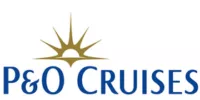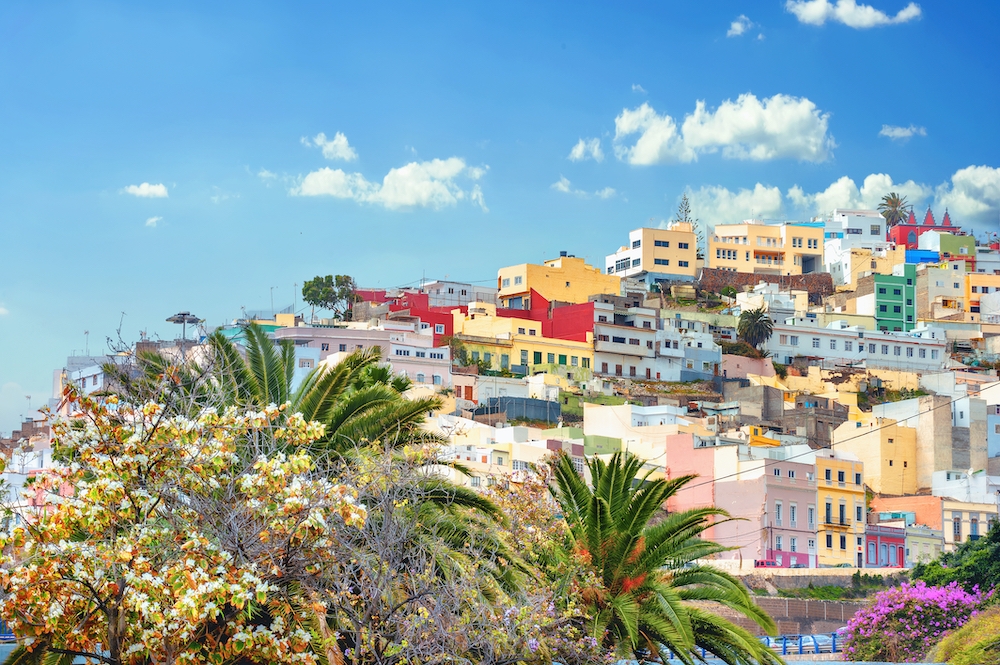
P&O Cruises
Welcome to the P&O cruise experience - where quality and value abide in perfect harmony.
P&O Cruises offer a distinctive style that appeals to both new and veteran travellers alike, with trademark sailings providing opportunities for the whole family to enjoy.
Cruises for those seeking an adult-only vibe are available, while those who prefer smaller ships can choose from more modest vessels.
2094
Passengers
866
Crew
2005
Launched
2017
Last refit
83781t
Tonnage
289m
Length
29m
Width
24kts
Speed
11
Decks
GBP
Currency
Cruise Itinerary
Day 1
Southampton, England
Days 2 - 3
At Sea
Relax and make the most of the myriad of facilities available on board the ship, from fantastic entertainment to delicious and diverse dining options.
Day 4
Lisbon, Portugal
Arrival Time: Early Morning; Depart Time: Afternoon
Day 5
At Sea
Relax and make the most of the myriad of facilities available on board the ship, from fantastic entertainment to delicious and diverse dining options.
Day 6
Funchal, Madeira, Portugal
Arrival Time: Early Morning; Depart Time: Afternoon
Day 7
Santa Cruz de Tenerife, Spain
Arrival Time: Morning; Depart Time: Early Evening
Days 8 - 9
At Sea
Relax and make the most of the myriad of facilities available on board the ship, from fantastic entertainment to delicious and diverse dining options.
Day 10
Sao Vicente Island, Cape Verde
Arrival Time: Early Morning; Depart Time: Afternoon
Day 11
Praia, Santiago Island, Cape Verde
Arrival Time: Early Morning; Depart Time: Afternoon
Days 12 - 14
At Sea
Relax and make the most of the myriad of facilities available on board the ship, from fantastic entertainment to delicious and diverse dining options.
Day 15
Takoradi, Ghana
Arrival Time: Early Morning; Depart Time: Afternoon
Days 16 - 19
At Sea
Relax and make the most of the myriad of facilities available on board the ship, from fantastic entertainment to delicious and diverse dining options.
Day 20
Walvis Bay, Namibia
Arrival Time: Early Morning; Depart Time: Afternoon
Days 21 - 22
At Sea
Relax and make the most of the myriad of facilities available on board the ship, from fantastic entertainment to delicious and diverse dining options.
Days 23 - 24
Cape Town, South Africa
Depart Time: Afternoon
Day 25
At Sea
Relax and make the most of the myriad of facilities available on board the ship, from fantastic entertainment to delicious and diverse dining options.
Day 26
Gqeberha (ex Port Elizabeth), South Africa
Arrival Time: Early Morning; Depart Time: Evening
Days 27 - 30
At Sea
Relax and make the most of the myriad of facilities available on board the ship, from fantastic entertainment to delicious and diverse dining options.
Day 31
Saint-Denis de la Réunion, Réunion
Arrival Time: Early Morning; Depart Time: Afternoon
Day 32
Mauritius, Mauritius
Arrival Time: Early Morning; Depart Time: Afternoon
Days 33 - 39
At Sea
Relax and make the most of the myriad of facilities available on board the ship, from fantastic entertainment to delicious and diverse dining options.
Day 40
Fremantle, Western Australia, Australia
Arrival Time: Early Morning; Depart Time: Evening
Days 41 - 43
At Sea
Relax and make the most of the myriad of facilities available on board the ship, from fantastic entertainment to delicious and diverse dining options.
Day 44
Adelaide, South Australia, Australia
Arrival Time: Morning; Depart Time: Evening
Day 45
At Sea
Relax and make the most of the myriad of facilities available on board the ship, from fantastic entertainment to delicious and diverse dining options.
Day 46
Melbourne, Victoria, Australia
Arrival Time: Early Morning; Depart Time: Early Evening
Day 47
At Sea
Relax and make the most of the myriad of facilities available on board the ship, from fantastic entertainment to delicious and diverse dining options.
Days 48 - 49
Sydney, New South Wales, Australia
Depart Time: Early Evening
Days 50 - 52
At Sea
Relax and make the most of the myriad of facilities available on board the ship, from fantastic entertainment to delicious and diverse dining options.
Day 53
Dunedin, New Zealand
Arrival Time: Early Morning; Depart Time: Afternoon
Day 54
Wellington, New Zealand
Arrival Time: Morning; Depart Time: Early Evening
Day 55
Napier, New Zealand
Arrival Time: Morning; Depart Time: Afternoon
Day 56
At Sea
Relax and make the most of the myriad of facilities available on board the ship, from fantastic entertainment to delicious and diverse dining options.
Day 57
Auckland, New Zealand
Arrival Time: Early Morning; Depart Time: Early Evening
Day 58
Tauranga, New Zealand
Arrival Time: Early Morning; Depart Time: Afternoon
Days 59 - 60
At Sea
Relax and make the most of the myriad of facilities available on board the ship, from fantastic entertainment to delicious and diverse dining options.
Day 61
Lautoka, Fiji
Arrival Time: Morning; Depart Time: Afternoon
Day 62
Suva, Fiji
Arrival Time: Morning; Depart Time: Afternoon
Days 63 - 64
At Sea
Relax and make the most of the myriad of facilities available on board the ship, from fantastic entertainment to delicious and diverse dining options.
Day 65
,
Arrival Time: Evening; Depart Time: Evening
Days 66 - 67
At Sea
Relax and make the most of the myriad of facilities available on board the ship, from fantastic entertainment to delicious and diverse dining options.
Days 68 - 69
Honolulu, Hawaii, United States
Depart Time: Afternoon
Days 70 - 73
At Sea
Relax and make the most of the myriad of facilities available on board the ship, from fantastic entertainment to delicious and diverse dining options.
Days 74 - 75
San Francisco, California, United States
Depart Time: Evening
Day 76
At Sea
Relax and make the most of the myriad of facilities available on board the ship, from fantastic entertainment to delicious and diverse dining options.
Days 77 - 78
Los Angeles, California, United States
Depart Time: Early Afternoon
Days 79 - 80
At Sea
Relax and make the most of the myriad of facilities available on board the ship, from fantastic entertainment to delicious and diverse dining options.
Day 81
Manzanillo, Mexico, Mexico
Arrival Time: Morning; Depart Time: Evening
Days 82 - 85
At Sea
Relax and make the most of the myriad of facilities available on board the ship, from fantastic entertainment to delicious and diverse dining options.
Day 86
,
Arrival Time: Early Morning; Depart Time: Afternoon;
Day 87
At Sea
Relax and make the most of the myriad of facilities available on board the ship, from fantastic entertainment to delicious and diverse dining options.
Day 88
Curaçao, Curaçao
Arrival Time: Morning; Depart Time: Afternoon
Day 89
At Sea
Relax and make the most of the myriad of facilities available on board the ship, from fantastic entertainment to delicious and diverse dining options.
Day 90
Bridgetown, Barbados
Arrival Time: Early Morning; Depart Time: Afternoon
Days 91 - 95
At Sea
Relax and make the most of the myriad of facilities available on board the ship, from fantastic entertainment to delicious and diverse dining options.
Day 96
Ponta Delgada, Azores, Portugal
Arrival Time: Morning; Depart Time: Early Evening
Days 97 - 99
At Sea
Relax and make the most of the myriad of facilities available on board the ship, from fantastic entertainment to delicious and diverse dining options.
Day 100
Southampton, England
Arrival Time: Early Morning; Depart Time: Early Evening

Day 1
Southampton, England

Days 2 - 3
At Sea

Day 4
Lisbon, Portugal

Day 5
At Sea

Day 6
Funchal, Madeira, Portugal

Day 7
Santa Cruz de Tenerife, Spain

Days 8 - 9
At Sea

Day 10
Sao Vicente Island, Cape Verde

Day 11
Praia, Santiago Island, Cape Verde

Days 12 - 14
At Sea

Day 15
Takoradi, Ghana

Days 16 - 19
At Sea

Day 20
Walvis Bay, Namibia

Days 21 - 22
At Sea

Days 23 - 24
Cape Town, South Africa

Day 25
At Sea

Day 26
Gqeberha (ex Port Elizabeth), South Africa

Days 27 - 30
At Sea

Day 31
Saint-Denis de la Réunion, Réunion

Day 32
Mauritius, Mauritius

Days 33 - 39
At Sea

Day 40
Fremantle, Western Australia, Australia

Days 41 - 43
At Sea

Day 44
Adelaide, South Australia, Australia

Day 45
At Sea

Day 46
Melbourne, Victoria, Australia

Day 47
At Sea

Days 48 - 49
Sydney, New South Wales, Australia

Days 50 - 52
At Sea

Day 53
Dunedin, New Zealand

Day 54
Wellington, New Zealand

Day 55
Napier, New Zealand

Day 56
At Sea

Day 57
Auckland, New Zealand

Day 58
Tauranga, New Zealand

Days 59 - 60
At Sea

Day 61
Lautoka, Fiji

Day 62
Suva, Fiji

Days 63 - 64
At Sea

Day 65
,

Days 66 - 67
At Sea

Days 68 - 69
Honolulu, Hawaii, United States

Days 70 - 73
At Sea

Days 74 - 75
San Francisco, California, United States

Day 76
At Sea

Days 77 - 78
Los Angeles, California, United States

Days 79 - 80
At Sea

Day 81
Manzanillo, Mexico, Mexico

Days 82 - 85
At Sea

Day 86
,

Day 87
At Sea

Day 88
Curaçao, Curaçao

Day 89
At Sea

Day 90
Bridgetown, Barbados

Days 91 - 95
At Sea

Day 96
Ponta Delgada, Azores, Portugal

Days 97 - 99
At Sea

Day 100
Southampton, England
Ship Details


P&O Cruises
Arcadia
Exclusively for adults - Arcadia’s signature features such as her exterior glass-fronted lifts and expansive art collection, featuring no less than 3,000 works of art, create a sophisticated air.
Cabins
All Prices











